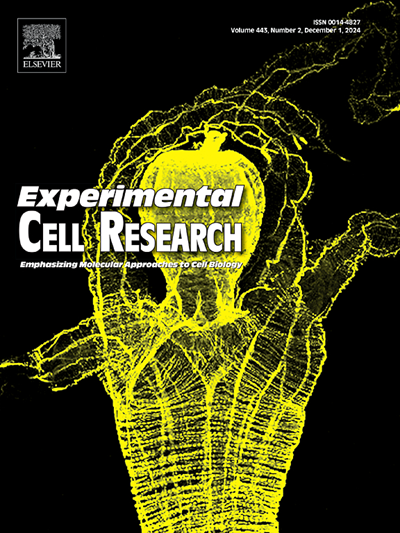GW806742X can induce mouse MLKL activation by directly promoting MLKL kinase like domain dimerization
IF 3.3
3区 生物学
Q3 CELL BIOLOGY
引用次数: 0
Abstract
The dimerization of the MLKL kinase-like domain (KLD) is a crucial step for MLKL activation in necroptosis. In 2014, it was discovered that GW806742X can directly bind to the mouse MLKL KLD via surface plasmon resonance (SPR) (Kd = 9.3 μM), inhibiting TNF-induced membrane translocation of MLKL and necroptosis. Consequently, GW806742X is considered a mouse MLKL inhibitor. In this study, we found that GW806742X blocks TNF-induced RIP1-dependent necroptosis but promotes necroptosis triggered by either RIP3 or MLKL self-oligomerization in the FKBPv chemical dimerizer system. In addition, higher doses of GW806742X can directly induce MLKL-dependent necroptosis and promote MLKL oligomerization, as detected by non-reducing Western blot. Through chemical cross-linking assays, we observed that GW806742X induces dimerization of recombinant mouse MLKL KLD proteins. The dimerization of the MLKL KLD is a direct consequence of RIP3 phosphorylation, a crucial step in RIP3-induced MLKL activation and necroptosis. Therefore, GW806742X exerts a dual effect on necroptosis: it inhibits necroptosis, likely by interfering with RIP1 function, while promoting necroptosis by facilitating MLKL activation.
求助全文
约1分钟内获得全文
求助全文
来源期刊

Experimental cell research
医学-细胞生物学
CiteScore
7.20
自引率
0.00%
发文量
295
审稿时长
30 days
期刊介绍:
Our scope includes but is not limited to areas such as: Chromosome biology; Chromatin and epigenetics; DNA repair; Gene regulation; Nuclear import-export; RNA processing; Non-coding RNAs; Organelle biology; The cytoskeleton; Intracellular trafficking; Cell-cell and cell-matrix interactions; Cell motility and migration; Cell proliferation; Cellular differentiation; Signal transduction; Programmed cell death.
 求助内容:
求助内容: 应助结果提醒方式:
应助结果提醒方式:


